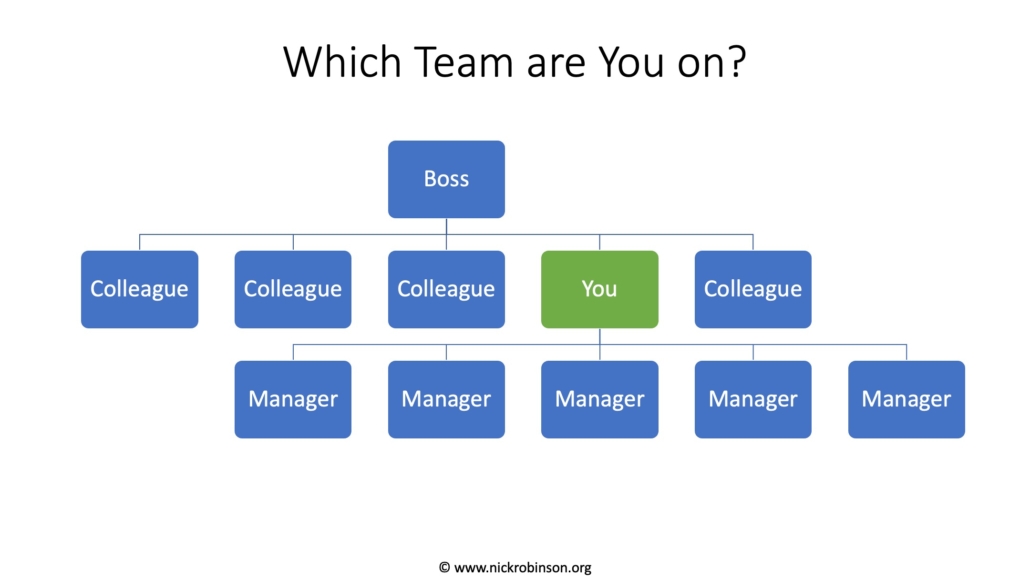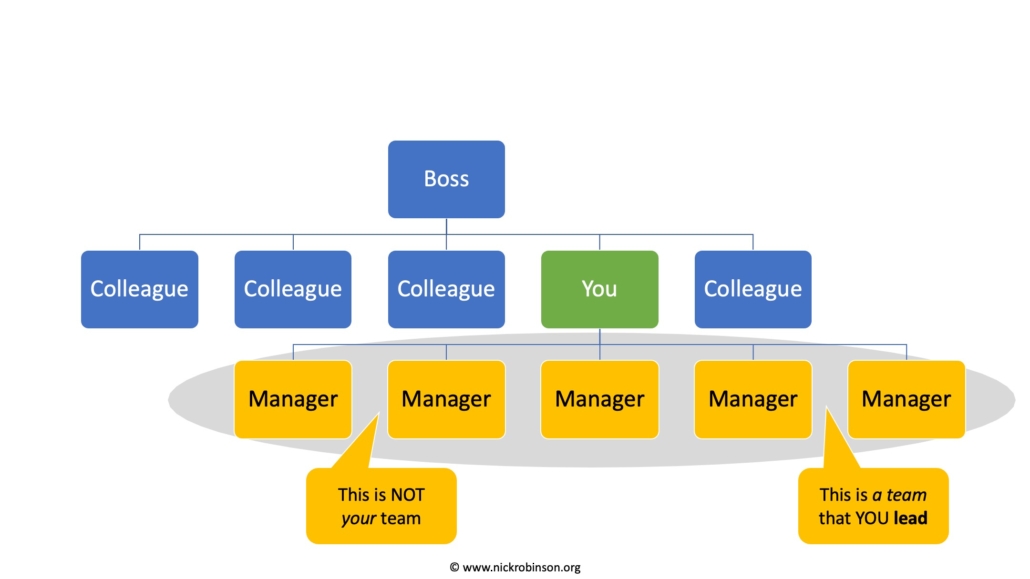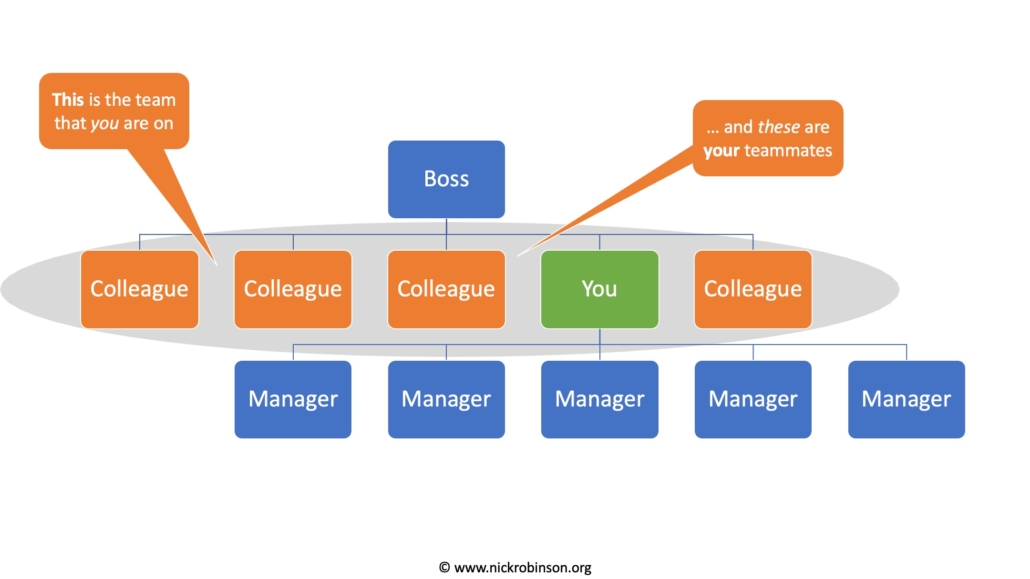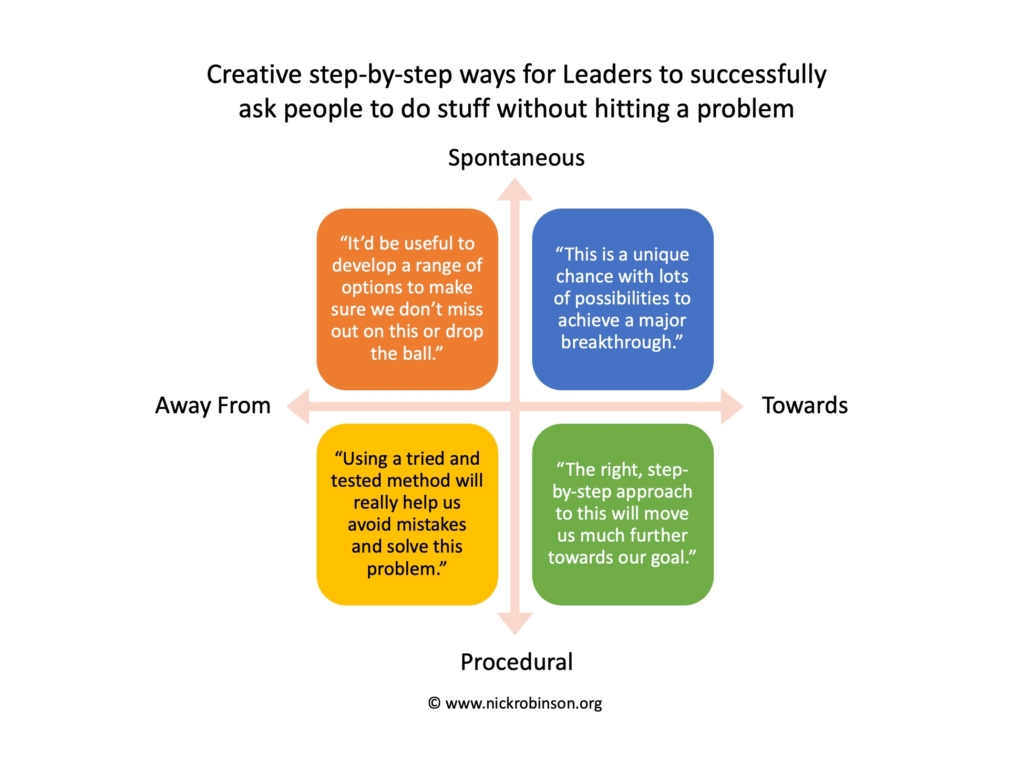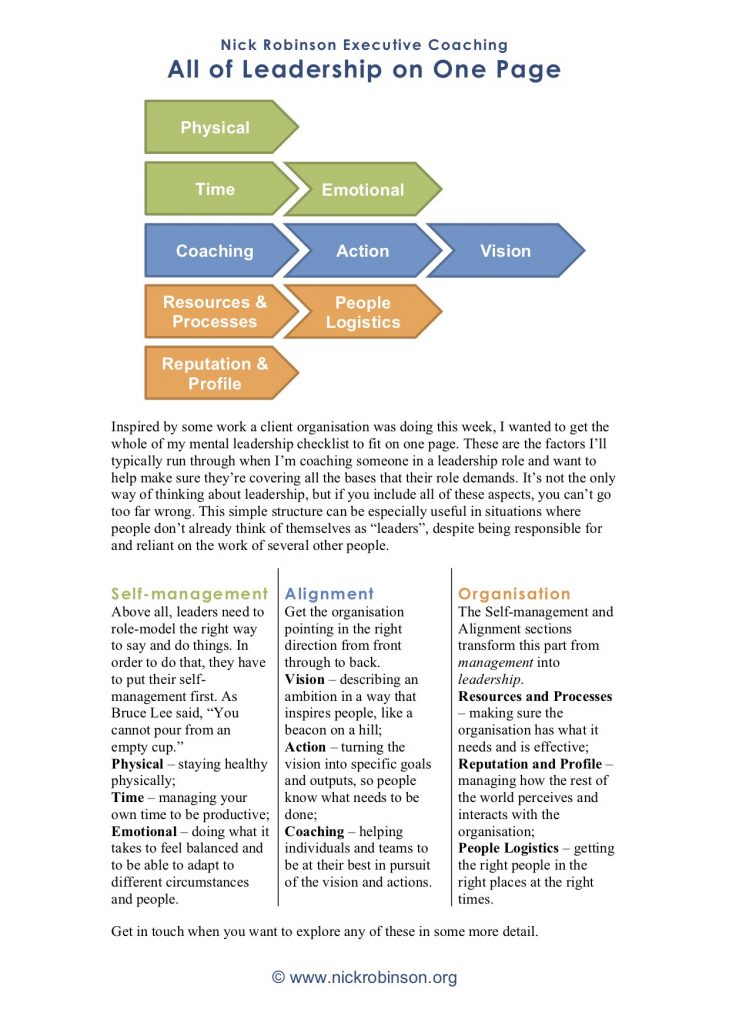Feel like you’re unstoppable – eight steps to being a powerful, Resourceful leader
Can you meet whatever situation life and work sends you – and show others how to do the same? Resourceful people can. Resourceful people have the initiative to grasp opportunities and the ingenuity to overcome their challenges. They can make powerful decisions and help their teams and colleagues to do so too.
We have a principle in the kind of coaching I do which is about regarding everybody as resourceful.
This is such an important thing that it’s maybe one of the first points I look for when I’m working with a new client. I ask myself:
How does this person regard themselves and the people who work for them? Do they think of themselves as someone who is able to meet whatever situation arises, and who is ingenious enough to devise ways and means to overcome problems? And do they think the same of their team and their colleagues too?
Perhaps one of the main reasons why regarding yourself and others as ‘resourceful’ is so important, is because the alternative is really awful. The alternative to regarding people as resourceful, is to see yourself and others as somehow fragile and dependent.
Now, it’s true that if you bend anyone hard enough and fast enough then they might break. But that is in no way the same as being ‘fragile’. And what’s more, breaks can be mended. And it’s also true that we are all, in some way, dependent on the people around us – like the poem says, “No man is an island” – but having those kind of human links, having dependencies, is not the same as being dependent, as being unable to function at all without others.
One of the loudest complaints I hear from poor leaders is that their people: “… aren’t resourceful enough”. They wonder why nobody works as hard as them or why their team: “… don’t show more initiative”. The years have taught me that this is a 90% certain sign that this leader doesn’t regard other people as resourceful. And usually, when I get the chance to dig a little more with this kind of leader, we find out pretty quickly that they don’t really feel resourceful themselves either!
All of us have times when we lose sight of our resourcefulness. Perhaps we’ve been stretched too far out of our comfort zones too fast or for too long. Or perhaps we’ve gradually had things pile up on top of us to the point where it’s difficult to remember just what we’re capable of.
It’s taken me a long time and lots of getting it wrong along the way to discover just how important this idea of resourceful actually is. Think of it like this. If it was possible to choose between two alternative points of view, which of these do you feel is likely to be most useful?
- In general, me and/or the people around me are easily broken and incapable of overcoming problems
- In general, me and/or the people around me are capable of meeting whatever situation arises and are skilled at solving problems.
If you could choose – which of those viewpoints would you have?
Us coaches tend to be very practical people, so we look for what works. And over the years I’ve tried a lot of things that don’t work! Now I’m pretty certain that the best leadership approach is to regard myself and others as fully resourceful.
The principle in my coaching work is that everybody has a natural ability to resolve the challenges they face and to grasp the opportunities around them.
When we forget that, or when I want to help others reconnect with their own innate resourcefulness, here are the eight steps that I follow:
1. Understand what Resourceful means
Two things are important to grasp in whatever your own or other people’s definition of Resourceful is:
First, that the word itself comes from the Latin ‘Resurgere’ – which means “to rise again”. Right there in the word is an important clue. Being Resourceful does not mean never falling, it’s about getting up again when you do.
Second, being Resourceful is a ‘capability’, something which can and should be developed, learnt and practised.
2. Start looking for Evidence of it
I think we’re predisposed to actually look for evidence of where ourselves and others are not Resourceful. Maybe this is even more prevalent at work. Perhaps it’s because the consequences of not being Resourceful can be (or seem to be) dangerous; and that we need to compensate for them. I’m not bothered by that, it seems a natural thing to want to do. But if we want to experience more occasions of ourselves and others being Resourceful, then we’ve got to start looking for evidence of when it IS happening.
To start looking for that evidence, answer this question:
What would you see, hear, feel or otherwise notice that would let you know when you’re being Resourceful?
3. Figure out what Thought-Patterns are useful to you
Once you know what Resourceful means for you or for others, and you know what evidence would let you see it was happening, two significant thought-patterns are worth exploring further. You can dive into them by answering these questions:
- What enables me to be Resourceful?
- What is necessary first, in order for me to be Resourceful?
- When I am Resourceful, what does it lead to or make possible?
- Why is being Resourceful important?
Your answers to those questions are the cornerstones of what some people would call an ‘empowering belief’ (kind of the opposite of a ‘limiting belief’). They’re at the heart of what might motivate you to be Resourceful, and they’re the primary clues to changing your behaviour if you want to be more Resourceful. So spend as much time exploring them as you can!
4. Become consciously aware of your fears
The stuff that we’re (usually unconsciously) afraid of is what most often derails our chance to be Resourceful. Being afraid of getting something wrong stops us from trying. Being afraid of looking stupid stops us from taking a risk. It’s hard to be Resourceful when your unconscious mind is afraid of what might happen if you try!
Other common fears include being afraid of getting hurt, of missing out, of failing, of letting people down, of not being good enough. There’s a lot! I’ve written about this stuff before, so feel free to browse around here. Once you stop and ask yourself honestly, what am I afraid of, or worrying about or being anxious of, it becomes much easier to see what’s going on. Don’t try to get rid of these fears – they serve their purpose – just get to the point where you’re conscious of them, and then…
5. Actively Make Choices
Making choices, intentionally and consciously, is a very powerful (and resourceful) thing to do. Otherwise we let habit, fear and expedience run the whole show.
You can use a structure like this, if you want to help yourself or others to make powerful choices:
- In order to be Resourceful, what three things do I choose to say “No” to?
In particular, what do I choose to say No to being, to say No to doing and to say No to believing?
- In order to be Resourceful, what three things do I choose to say “Yes” to?
In particular, what do I choose to say Yes to being, to say Yes to doing and to say Yes to believing?
6. (Re)Discover what Resourceful feels like in your body
Remember that there’s a dynamic aspect to being Resourceful. It isn’t just a static thing, it’s about rising again when we’ve fallen or when we’re stuck or when we’re faced with another fresh challenge.
What does each part of that dynamic process feel like in your body? What do your muscles feel like? What’s the temperature of it? What feelings do you notice in your gut, in your face, elsewhere in your body? When you get to the most Resourceful part, what does that feel like? And where in your body is the centre of your own version of Resourceful?
Daft as it may sound, getting to know what your own experience of Resourceful is like in this way can be a really helpful and grounding approach.
7. Connect with others
Don’t do all of this stuff on your own. I’m a very independent person and I respect other people who like to do things by their own efforts too and I know that it really helps to be wise enough to share some of it. You can learn from, lean on and bounce stuff around with other people in a way that just isn’t possible by yourself.
8. Experiment, Practice and Adjust
Finally, I said earlier that everybody has that natural ability to resolve the challenges they face. The best way to bring that out in yourself and in others is to experiment with it. Find opportunities to be Resourceful. Get curious about what that’s like. Practice doing it like your favourite sports person would practice their skills. When you notice something isn’t working, adjust part of it, and practice some more.


